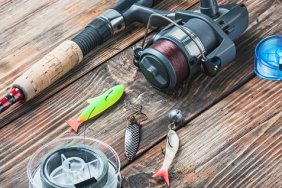 Earlier this week we took a look at some tips for fishing topwater frogs during the fall month. If you’re fortunate enough to live in warmer regions during the autumn months, then frogs can still be used to attract strikes, even when the temperatures drop a little. Today we’ll continue with a few more fall frog tips to store in your mental arsenal.
Earlier this week we took a look at some tips for fishing topwater frogs during the fall month. If you’re fortunate enough to live in warmer regions during the autumn months, then frogs can still be used to attract strikes, even when the temperatures drop a little. Today we’ll continue with a few more fall frog tips to store in your mental arsenal.
When you’re choosing frog lures, I’d go with hollow-bodied models that are large, but not too large. Bigger frogs tend to displace more water than smaller ones, which is what you’ll want. Try to find soft frogs, too, as they’ll allow for more reliable hookups. Sure, the softer material may not last several seasons, but most anglers would rather make sure they get solid hook sets and spend a few dollars each season.
Also, you’ll want to make sure the silicone skirts on your frog are realistic, as in not too long. Most skirts are quite lengthy, which doesn’t offer a natural presentation. You can always cut them down yourself, of course, or find frogs with shorter skirts.
As we’ve covered in the past, the color of your frog can play a role in attracting fish, but don’t be enticed by the variations on the market, as fish will typically only see the belly. Fishing weeds this fall, the subtleties in color can be picked up on when you pull your frog over a hole in a weed clump. My advice is to keep a Leopard pattern on hand, which will match the prevalent frog species found in the southern states. If you find fish to be a little picky, or you’re fishing pressured waters, a white belly is a good idea.
Later this week, we’ll close out our series on fall froggin’ with a look at the tackle and techniques you’ll want to use when you’re fishing frogs during the autumn months. Many anglers will likely be surprised at how effective frogs can be in the fall, but hopefully this series has been helpful thus far in boosting your skills.








